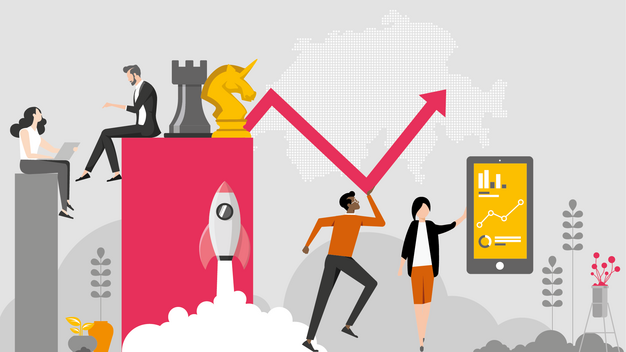Live: Successful teams through diversity
Diversity and inclusion
Inclusive diversity
Diversity and inclusion are inseparable. Simply put, diverse teams are only inclusive, if no member feels excluded. All team members must feel that their individuality brings added value to the table. It is therefore incumbent upon companies to recognise what sets employees and applicants apart, and to value and respect how they are. Subconscious bias, unfair wages, inefficient workplace structures and prejudices are obstacles to parity and handicap companies in the fierce competition to recruit skilled workers and talented individuals.
More than one good reason
Inclusive diversity is good for business in many different ways:
- It reflects a diverse and forward-looking corporate culture that enables companies to spot more opportunities and risks.
- It allows employees to unlock and develop their potential.
- It promotes open dialogue.
- It drives innovation.
- It boosts the efficiency of collaborative work.
- It recognises the diversity of markets, customer target groups and employees.
- It enhances the company’s image and the public’s perception.
Good-bye to groupthink
Groupthink is a social process in which a group makes poor or unrealistic decisions because each individual tries to conform to the expected group opinion or to the opinion of a dominant member (highest paid person in the office, HiPPO). This results in compromises or actions that individual members would reject under normal circumstances. Groupthink is behind most crises and wrong decisions, as it distorts a team’s dynamics. Groupthink is virtually absent on committees that are diverse and inclusive.
The diverseness of diversity
Diversity encompasses all the qualities that distinguish employees, be they gender, ethnicity, age, qualifications, cognitive abilities, attitude, sexual orientation or emotional intelligence. Inclusive diversity is crucial for companies, the economy and society.
Get specific about fighting racism
Recent protests across the globe have made it clear that people from all walks of life are fed up with racial discrimination. Companies that are serious about distancing themselves from racism need to become specific about their approach. Senior leaders can make general statements but they also need to ensure that HR processes are designed to prevent or identify racism, that managers can implement the message and that employees understand how to avoid racism and feel free to speak up.
A question of age as well
Ageism – discriminating against people because of their age – is a very common form of discrimination. In Europe and Switzerland, it is more common than sexism and racism. Age discrimination mostly affects older people. Strikingly, many younger employees also report experiencing ageism. As the population continues to age and generation Z enters the labour market, the age range in companies will only widen. A key role is being played here by initiatives for diversity and inclusion such as age-appropriate upskilling, health and fitness support, and a deliberate mixing of experience and age in teams.
Women at the helm
Many countries have brought in legislation setting quotas for women on management boards. In Europe, the statutory benchmarks range from 30% to 40%. Although equality is a constitutional requirement in Switzerland, women only make up 16% of board of directors members of the country’s one hundred largest companies, and only 6%1 of executive board members. This raises the question of how companies can be forced to make things better for themselves. After all, Credit Suisse’s report “The CS Gender 3000: Women in Senior Management” has demonstrated that gender diversity increases returns on equity, improves the price-to-book ratio and allows for higher dividend payments. One interesting fact is that men apply for a job if they meet 60% of the required criteria, while women generally only apply if they meet the requirements in full.2
1 “The diverseness of diversity”, Bruno Rossi, Partner, Audit, PwC Switzerland, 2019
2 “Leveraging Leading and Lagging KPIs to step change Inclusion & Diversity”, Jasmin Danzeisen, People and Organisation Senior Manager, PwC Switzerland, 2019
Equality pays
Equal pay is paramount to inclusion. How can people feel valued if they know or think that employees are paid differently for doing the same work or work of similar value? Equal pay also goes hand in hand with good corporate governance. The Swiss Ordinance against Excessive Remuneration has been in force since 2014, with the amended Swiss Gender Equality Act and the Swiss Ordinance on the Reviews of Wage Equality Analysis in effect since 2020. These stipulate that employers with 100 or more employees must carry out an internal wage analysis every four years until 1 July 2032. In other countries too, regulators demand “equal pay for equal work”. In Switzerland, the EQUAL SALARY certification is gaining in importance in the absence of a clear global definition of equal pay. With this seal of approval, companies can have their commitment to equal pay and opportunities verified by an external body. An interest fact is that Millennials, in particular, prioritise working for a socially conscious company above earning lots of money.
Offering strength, developing strength
Regardless of whether employees are homosexual, bisexual, queer, pansexual, asexual, LGBTIQ or LGBT+, two questions are fundamental: who should I identify with and who can I trust? In their everyday working lives, one in four say they have experienced LGBT+ discrimination, with younger people affected more often than their older peers. When part of a strong community, these people can stand up to hostility more easily and develop their potential. Employers can provide such a community by embracing inclusive diversity and supporting LGBT+ initiatives.




